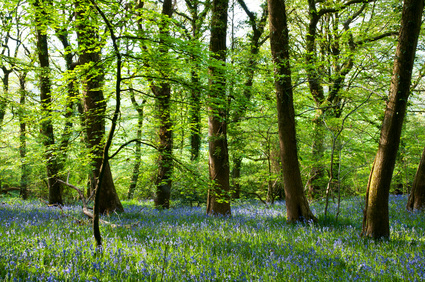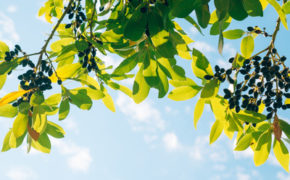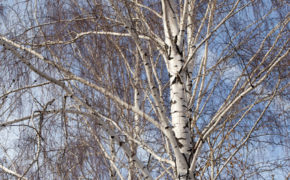
Get a quick no obligation quote It’s free and will only take a jiffy!
Beech Tree
Everything you need to know about the beech tree, from identification tips to typical characteristics; how to spot disease and the best way to maintain a beech tree.
The beech tree is a UK native species that is known to live for hundreds of years, sometimes even thousands with regular coppicing.
Beech trees have the potential to grow to over 40 metres in height and when mature typically develop a significantly sized domed crown. The beech is often confused with the hornbeam, although you can identify the beech by its characteristic wavy edged leaves as opposed to the hornbeam that has leaves bearing serrated margins.
Due to its longevity, the beech tree is important for wildlife and it also makes an excellent hedging plant: give it a careful, regular clipping and it will retain it leaves, so providing year-round privacy for both householders and birdlife.
General Facts
| Known as | Beech tree, common beech, European beech |
| Latin name | Fagus sylvatica |
| Location | Central Europe to Caucasus |
| Foliage | Deciduous |
| Lifespan | Several hundreds of years |
Characteristics
| Height | Up to 40 metres |
| Spread | 8 metres plus |
| Appearance | A large and vigorous tree that grows very tall and develops a broad, domed crown. Bark is smooth, thin and grey and sometimes bears faint horizontal etchings. |
| Leaves | Leaves appear on stalks and are oval in shape with a pointed tip. The younger leaves of the beech tree are vibrant lime green and have silky hairs. As they develop, the leaves darken and lose their hairs, finally becoming a rich russet brown before falling in autumn. The characteristic wavy edge of the leaf makes |
| Flowers | Both male and female flowers appear on the same tree in April and May. Male flowers are catkins that hang from long stalks off the end of twigs. Female flowers grow in pairs and are surrounded by a cup. |
| Fruit | The cup surrounding the female flower starts to become woody and prickly after pollination. One or two triangular shaped green beech nuts, known as beechmast, will be found inside. |
| Found in | Mostly woodland |
Conditions
| Ideal soil | Moist but well drained, chalk, loam or limestone soil |
| Soil pH | Neutral, acid, alkaline |
| Aspect | North, south, east or west facing |
| Exposure | Full sun to partial shade; can be sensitive to winter frost |
Threats
| Pests | Aphids, beech bark scale |
| Diseases | Coral spot, heart and root rot, beech bark disease |
Beech Trees and Wildlife
The beech woodland provides a vital habitat for numerous butterflies. Caterpillars of the olive crescent, clay triple-lines and barred hook-tip moths very much enjoy the leaves and the seeds form a staple diet for birds, squirrels, mice and voles.
You’ll often find some rare plant species within the beech woodland, including various orchids and coralroot bitter-cress.
With the beech tree having such a long lifespan, it provides a comfortable home for deadwood loving wildlife such as wood-boring insects and hole-nesting birds. All sorts of fungi, lichens and mosses grow on the bark including native truffle fungi which plays an important role in assisting the tree in obtaining nutrients. This it does in exchange for a portion of the sugar the tree produces via photosynthesis.
Beech Tree Symbolism and History
Where the oak tree is considered the king of British trees, so the beech tree is thought of as the queen.
Fagus was the Celtic god of beech trees which were thought to have medicinal properties. The leaves would be used to reduce swelling and boiling them up would form a poultice used to treat scabs. Nowadays, beech essential oil is used in aromatherapy to boost hope and confidence.
Forked beech twigs are favourites for divining and it is said that a beech branch can be used as a wand to open communication channels with the spirit world. Folklore dictates that if you carry small pieces of beech bark in your pocket, you will experience luck and success, and that powdered beech wood, when placed in your right shoe, will lead you towards your fortune.
The Importance of Beech Trees
The timber of the beech tree serves numerous purposes. It is very popular in furniture making and produces fine natural wood veneers. It is also used to make sporting equipment, tool handles and cooking utensils. As the wood burns well, it makes a good fuel and is traditionally used in herring smoking.
Beech is commonly used as hedging as it will retain its leaves with careful clipping, which makes it much loved amongst birds and homeowners.
Caring for a Beech Tree
The beech tree is a low maintenance tree and only needs light pruning. Harder pruning of the beech tree could lead to serious problems, so it is essential to proceed with caution when pruning.
The key objective when pruning a beech tree is to maintain its ideal size and to keep it manageable and in good health. You should be seeking to enhance the tree’s aesthetic appeal, which means keeping pruning in proportion.
You should remove dead wood and prune out any branches that have been damaged by bad weather or insects or wildlife. You will also need to take out any branches growing too close together in order to promote good air flow and light penetration which will help to keep the tree in good health.
Tree surgeons will use crown thinning for this purpose, and they will also sometimes carry out crown lifting, which involves removing a few of the lower branches so as to prevent the tree interfering with traffic or passers-by.
If you see sunken, dead patches of bark and small holes in the leaves of your beech tree as well as a glue-like substance oozing from the bark, this could be down to bacterial canker. It is important to look for these symptoms before going ahead with any pruning as you may need to revise your schedule so as to make sure the tissues of the tree are at their most resistant when you make your cuts.
Beech bark disease, caused by a combination of canker fungus and the sap-sucking scale insect, is another known issue and in serious cases can result in the death of the tree. Phytophtora root rot which shows itself as sparse, yellowing or wilting leaves and dieback of branches, and bark stripping via the habits of the grey squirrel can also be common issues for the beech tree.
Over-pruning of beech trees by inexperienced persons is sadly far too prevalent and can cause irreparable damage to the tree. Also, as the beech tree reaches towering heights, it is of course extremely hazardous to attempt any form of work without the right equipment, insurance and expertise.
A qualified tree surgeon will know exactly how and when to prune a beech tree for best results. They will also be clued up to spot the common and often serious diseases associated with this particular tree, and will know how to handle them so that the tree has the very best chance of survival.
If you have a beech tree that could do with some expert care and attention, why not talk to T.H. Tree Services? As fully qualified and extensively experienced tree surgeons, we can offer in-depth knowledge and skill across all aspects of beech tree care. For a free, no-obligation quotation, call us on 01268 642814 or get in touch here.
Had a fallen tree in the early hours of Monday morning, called for quote and the team had it cleared on the same day. Really good communication when the lads were onsite and did a great job. Lots of pride in their work shown with the thorough clear up. Would thoroughly recommend.
Thank you Stuart for your kind review. We were glad to be able to help you with your fallen tree. If there's anything else you need in the future, please don't hesitate to get in touch.








